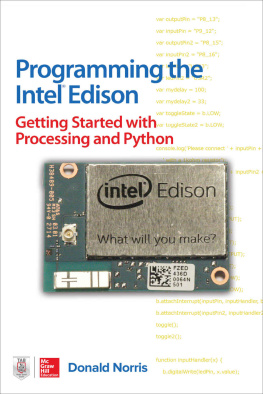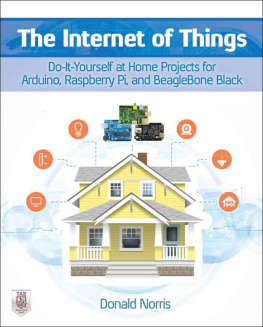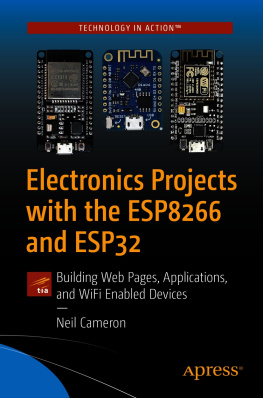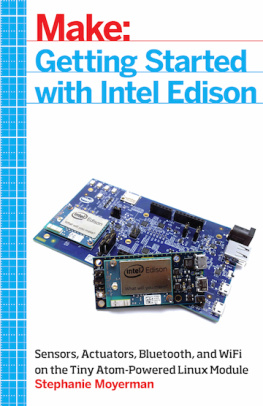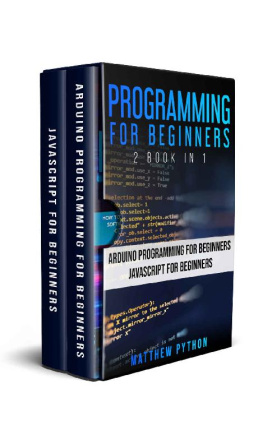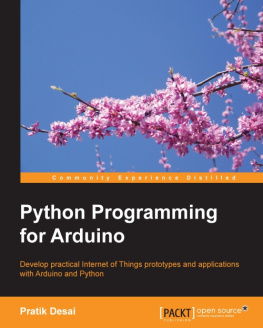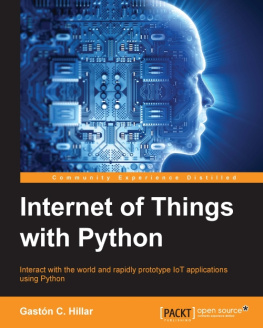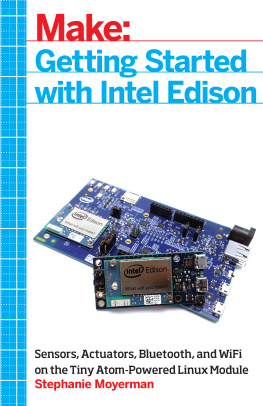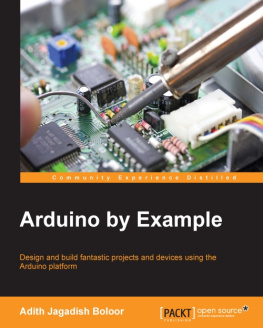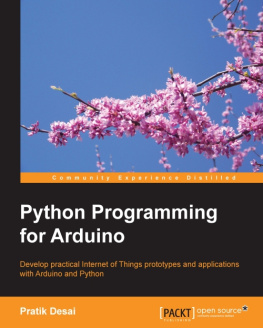About the Author
Donald Norris has a degree in electrical engineering and an MBA specializing in production management. He is currently teaching undergrad and grad courses in the IT subject area at Southern New Hampshire University. He has also created and taught several robotics courses there. He has over 30 years of teaching experience as an adjunct professor at a variety of colleges and universities.
Mr. Norris retired from civilian government service with the U.S. Navy, where he specialized in acoustics related to nuclear submarines and associated advanced digital signal processing. Since then, he has spent more than 20 years as a professional software developer using C, C#, C + +, Python, Node.js, and Java, as well as 5 years as a certified IT security consultant.
Mr. Norris started a consultancy, Norris Embedded Software Solutions (dba NESS LLC), which specializes in developing application solutions using microprocessors and microcontrollers. He likes to think of himself as a perpetual hobbyist and geek and is always trying out new approaches and out-of-the-box experiments. He is a licensed private pilot, photography buff, amateur radio operator, avid runner, and, last but very important, a grandfather to a brand new baby girlheres to you, Evangeline.
Copyright 2016 by McGraw-Hill Education. All rights reserved. Except as permitted under the United States Copyright Act of 1976, no part of this publication may be reproduced or distributed in any form or by any means, or stored in a data base or retrieval system, without the prior written permission of the publisher.
ISBN: 978-1-25-958789-4
MHID: 1-25-958789-4
The material in this eBook also appears in the print version of this title: ISBN: 978-1-25958833-4, MHID: 1-25-958833-5.
eBook conversion by codeMantra
Version 1.0
All trademarks are trademarks of their respective owners. Rather than put a trademark symbol after every occurrence of a trademarked name, we use names in an editorial fashion only, and to the benefit of the trademark owner, with no intention of infringement of the trademark. Where such designations appear in this book, they have been printed with initial caps.
McGraw-Hill Education eBooks are available at special quantity discounts to use as premiums and sales promotions or for use in corporate training programs. To contact a representative, please visit the Contact Us page at www.mhprofessional.com.
Information has been obtained by McGraw-Hill Education from sources believed to be reliable. However, because of the possibility of human or mechanical error by our sources, McGraw-Hill Education, or others, McGraw-Hill Education does not guarantee the accuracy, adequacy, or completeness of any information and is not responsible for any errors or omissions or the results obtained from the use of such information.
TERMS OF USE
This is a copyrighted work and McGraw-Hill Education and its licensors reserve all rights in and to the work. Use of this work is subject to these terms. Except as permitted under the Copyright Act of 1976 and the right to store and retrieve one copy of the work, you may not decompile, disassemble, reverse engineer, reproduce, modify, create derivative works based upon, transmit, distribute, disseminate, sell, publish or sublicense the work or any part of it without McGraw-Hill Educations prior consent. You may use the work for your own noncommercial and personal use; any other use of the work is strictly prohibited. Your right to use the work may be terminated if you fail to comply with these terms.
THE WORK IS PROVIDED AS IS. McGRAW-HILL EDUCATION AND ITS LICENSORS MAKE NO GUARANTEES OR WARRANTIES AS TO THE ACCURACY, ADEQUACY OR COMPLETENESS OF OR RESULTS TO BE OBTAINED FROM USING THE WORK, INCLUDING ANY INFORMATION THAT CAN BE ACCESSED THROUGH THE WORK VIA HYPERLINK OR OTHERWISE, AND EXPRESSLY DISCLAIM ANY WARRANTY, EXPRESS OR IMPLIED, INCLUDING BUT NOT LIMITED TO IMPLIED WARRANTIES OF MERCHANTABILITY OR FITNESS FOR A PARTICULAR PURPOSE. McGraw-Hill Education and its licensors do not warrant or guarantee that the functions contained in the work will meet your requirements or that its operation will be uninterrupted or error free. Neither McGraw-Hill Education nor its licensors shall be liable to you or anyone else for any inaccuracy, error or omission, regardless of cause, in the work or for any damages resulting therefrom. McGraw-Hill Education has no responsibility for the content of any information accessed through the work. Under no circumstances shall McGraw-Hill Education and/or its licensors be liable for any indirect, incidental, special, punitive, consequential or similar damages that result from the use of or inability to use the work, even if any of them has been advised of the possibility of such damages. This limitation of liability shall apply to any claim or cause whatsoever whether such claim or cause arises in contract, tort or otherwise.
This book is dedicated to Linda Norris, who is a kind, loving, and generous person, and mother to Shauna, Heath, and Derek. She is also Mimi to grandchildren Hudson and Evangeline.
CONTENTS AT A GLANCE
CONTENTS
PREFACE
This book will serve both as an introduction to the Intel Edison computing module and also as a reliable and concise Getting Started Guide for interested readers. This computing module was introduced at the Intel Developers Forum 2014 held in San Francisco on September 10, 2014. Intel described the Edisons value as follows:
The Intel Edison development platform is designed to lower the barriers to entry for a range of inventors, entrepreneurs, and consumer product designers to rapidly prototype and produce IoT and wearable computing products.
The Edisons form factor, which will be described in detail later, is most definitely slated for applications demanding extremely compact hardware and, simultaneously, consuming miniscule power.
The Edison computing module is the latest in a progression of embedded technology devices that Intel has created over a long time frame. The Galileo Gen 2 development board was the most recent technology platform that just preceded the Edison. In many ways, the Galileo and Edison are quite similar except for one key aspect: The Galileo board may be used as is, meaning that all it needs is a power supply and interconnectivity to be accessed and operated. The Edison, on the other hand, requires some type of support board to provide both power and interconnectivity. The Edisons need for a support board is the reason that I believe Intel labeled it as a computing module instead of a development board.
The Edison contains some remarkable hardware despite its very small size. It was purposefully designed to be used as a very capable embedded control module operating within an encompassing system. Intels design philosophy was to make the module extremely compact with ultra-low power consumption. These attributes make it ideal to function as a wearable computer, which is described in much greater detail later in the book.
The foregoing was just a brief glimpse into what I will discuss in much greater detail in this book. Lets now delve into the Edison and see what makes it tick.
Introduction
In this chapter, I will show you what makes up the Intel Edison computing module and introduce two supporting development boards that will be used in programming the Edison as well as allowing it to connect with other system components.
The Edison Computing Module
to see if the Quark supporting software has become available. I am sure that informative examples will also be provided to help you utilize the coprocessor.
Next page
